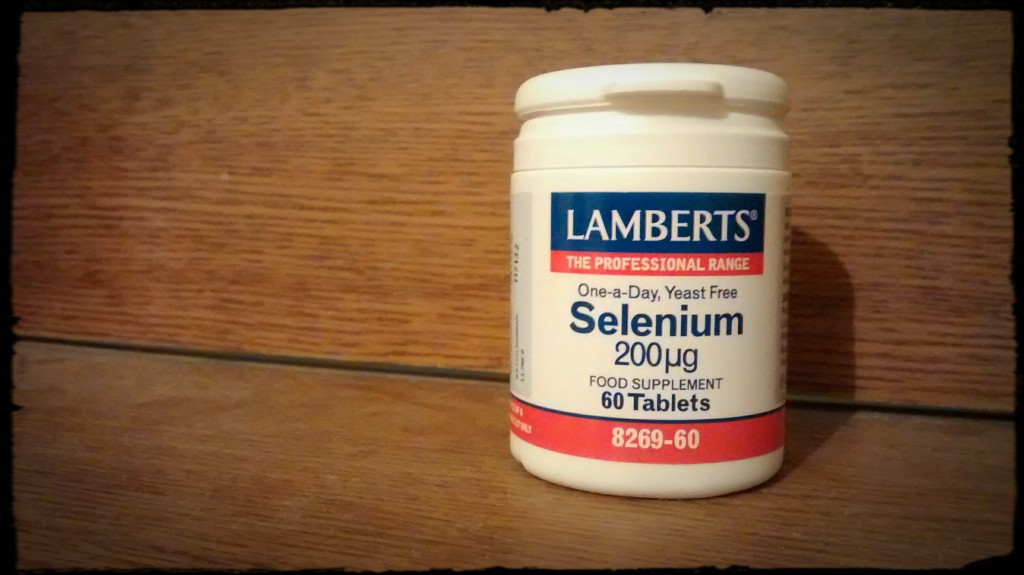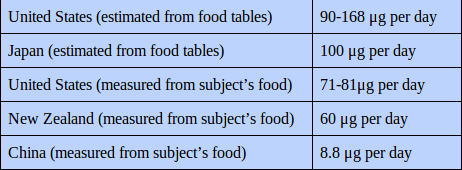
Selenium insufficiency is a chronic low intake of selenium that is not severe enough to cause Keshan disease or Keshin-Beck’s disease. However, a selenium insufficiency may increase the risk of developing cancer.
Selenium deficiency results in Keshan disease which is characterised cardiomyopathy, cardiogenic shock and congestive heart failure, as well as Keshin-Beck’s disease which is characterised by osteoarthritis and joint degeneration. In animals, selenium deficiency is known to cause birth defects in monkeys that resembles cystic fibrosis in humans, which lead Joel Wallach of Dead Doctors Don’t Lie fame to claim that cystic fibrosis is caused by a maternal selenium deficiency. In contrast, a selenium insufficiency is defined as an inadequate selenium intake that results in chronic ill health. However a selenium insufficiency does not cause outright deficiency symptoms. Selenium insufficiency is thought to increase the risk of certain diseases, perhaps because of decreases in cellular glutathione peroxidase activity. Selenium insufficiency can decrease plasma level of glutathione peroxidase, and supplementation quickly reverses this decline, supporting a role for selenium in the prevention of oxidative stress.
Although recommended intakes of selenium have been published by various ‘authorities’, it is now widely believed that these recommendations are too low. Further, many of the studies investigating selenium intake have measured the theoretical selenium in food purchased, rather than directly measurement of the amount of selenium in food consumed. These estimates are therefore likely to exaggerate the true selenium intake of most populations (figure 1). China is one country where researchers have analysed selenium intakes extensively because many areas in China have selenium poor soils. These areas, including Henan province and Molimo, have increased prevalence of Keshan disease and Kashin-Beck’s disease, and selenium insufficiency is thought to be widespread. Estimates of the selenium intakes of subjects living in low selenium areas of Molimo have been reported to be 8.8 μg per day1 with a range of between 2.3 and 35.5 μg per day, below the recommended intake of between 50 and 200 μg per day of selenium.
Figure 1. The selenium intakes of various countries.
The selenium insufficiency of the population living at Molimo therefore explains the higher incidence of selenium related disease present in this population. The selenium absorption of the subjects from Molimo has been reported to be 57 %. Typical organically bound selenium absorption ranges from 50 to 80 % whereas inorganic selenium absorption ranges from around 44 to 70 %. Because actual food measurements were taken the selenium estimates for the population in Molimo are likely to accurately reflect true intake. In China Keshan disease is absent from areas where intake exceeds around 30 μg per day and in New Zealand, another country with selenium poor soils, intakes of 20 μg per day do not result in Keshan disease. However, that is not to say that selenium insufficiency is absent from such populations. For example rates of particular types are cancer are much higher in the Henan province of China, an area that is characterised by widespread selenium insufficiency amongst its population.
Although many regions of the World now have low selenium soils, many do not produce selenium deficient populations. This may relates to the degree of isolation experienced by their populations. For example, Molimo is a remote mountainous region of China that has little food imported. Foods consumed tend to be locally grown on the selenium deficient soils. Grains and beans are a staple food, but contain only around 0.005 parts per million of selenium. Locally grown vegetables contain only 0.003 parts per million selenium. More Westernised countries may import higher selenium grain which increases the selenium intakes of the populations despite selenium deficient soils, as might be the case in New Zealand. Seasonal variation in selenium intake has also been reported in the population of Molimo, and this may relate to the fact that in the summer increased physical labour necessitate three meals per day, some of the food for which is imported from neighbouring provinces with slightly higher soil selenium levels.
Selenium insufficiency develops from a period of negative selenium balance which may later subsequently stabilise. In this regard selenium excretion may be regulated to prevent deterioration from a selenium insufficiency to a selenium deficiency. Selenium status can also therefore depend on the selenium losses of the individual. Higher intakes of selenium may result in higher losses, and as intakes fall, the urinary and faecal losses are reduced to compensate for intake. In the population on Molimo for example, urinary and faecal losses were reported to be 7.1 μg per day, whereas losses in subject from the United States and New Zealand have been reported to be 54 and 24 μg per day, respectively. Some of this variation may relate to body size, as the mean body weight of the subjects from molimo was 60 kg compared to the average 75 kg of subjects in Western nations. However, it might also relate to the fact that selenium insufficiency results in a compensatory mechanisms to allow increased selenium retention.
RdB

